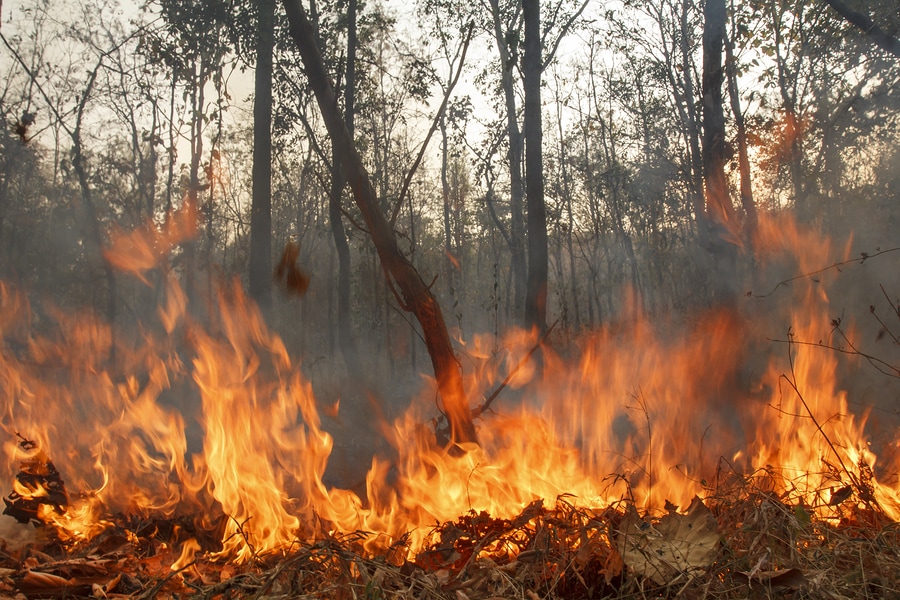While California and other western states may get the most media coverage for their wildfires, it's actually the southern United States that led the country in homes destroyed by wildfires in 2016.According to the National Interagency Fire Center (NIFC) there were more than 67,000 wildfires in the US last year. Those fires destroyed over 5.5 million acres, with nearly 1.6 of those lost acres in the south. Tennessee led the nation in wildfires, and the highest number of structures lost in one state – 2,000 plus residences and 53 commercial buildings. California ranked second with 754 residences and 12 commercial structures.In spite of the catastrophic possibilities when living in a rural or heavily wooded area, the benefits often outweigh the potential of a wild fire. Being in nature, isolation, pollution free air, wildlife and privacy are many of the reasons homeowners give when searching for homes in wild land and rural areas.
Three Things to Consider When Buying a Home in a Fire Zone
Fire zones are areas in a city, county or other municipality that have certain levels of fire risk associated with it, as defined in the building codes. The amount of risk is predicted on the density of the area, as well as the land use (farm vs. timber for instance), and the existing type of construction (other houses) in the area.Your first stop, and the first thing to look for when shopping for a home, is how the area is designated in terms of fire, flood, and earth quake risk. If you have a Realtor, particularly one in a fire zone area, they should also be able to tell you about a home's designation. California, and some other states, have Realty Disclosure laws that require realtors to disclose whether or not a property is in a fire, flood, wild land, or earthquake zone prior to closing.When looking for a home in a fire zone Cathy Prudhomme, Firewise USA Program Manager for the NFPA's Wildfire Division had tips for buyers. "Look for homes that have done wildfire risk reduction work and have incorporated good building construction features, like fire resistant roofs and siding and have done work in the 3 Home Ignition Zones using the guidelines (0 to 5 feet, 5 to 30' and 30 – 100 feet) to reduce wildfire risk. Look at the topography or area around the house. Homes are more vulnerable if they're located at the top of a chimney or ridge top. Make sure there's a minimum of two ingress/egress routes. Finally, make sure the community/neighborhood is an active Firewise USA site and working with their local forestry or fire district on reducing risks in commonly owned and adjacent areas." Once you find a house you like, take time to make sure the community is fire safe too. "Meet with the local fire department staff and/or call the local emergency manager and ask about the issues that are relevant in that specific community, since it can vary from jurisdiction to jurisdiction. Ask about the fire history in the area, drought conditions, risk ratings and the department's response capabilities," Prudhomme said.

After talking with the local emergency manager, contact your insurance agent for more information about insurance costs and specific fire zones in the area. If you don't have an insurance agent, call several listed online in that area, or contact a Realtor for names of agents they work with. Remember, you're bound to get different estimates from different agents – depending on if they are local, national or specialize in fire or flood insurance. Some insurers will require a site visit, others will not. Be sure to compare policies to make sure both companies offer the same coverage.Learn not to burn – this means educate yourself about what kinds of things to look for when buying a home in a fire zone. Things that will not only help bring your insurance rates down, but that will make your home easier to defend against a fire:
- Homes with a pool. This can be an in-ground pool (best), or an above ground pool you install yourself. Having a readily available source of water (in addition to your house and well or city water connection) is a huge plus.
- Metal, tile or fire resistant composite roof. Either look for a home that has such a roof, or budget to install one. Talk to your insurance agent to determine the best roof. Metal and tile tend to give the best rates and protection.
- Defensible Space. This is space around, above, and below your home that you can use to defend against an encroaching fire. Homes don't just burn because fire overtakes them. They can also burn from radiant heat – fire at a distance that generates heat that causes a home to combust. For full details about the kinds of defensible space to consider, read this free PDF from Colorado Statue University on Wildfire Safety.

Finally, if you do buy a home and end up having to evacuate because of a fire, remember everything you own, except for your life, can be replaced. "Homeowners should heed all emergency notifications from law enforcement, fire departments and emergency management personnel and evacuate as instructed," Prudhomme said. "If they feel in danger or see the fire is moving quickly towards their property, don't wait to receive a call, leave the home while there's plenty of time to evacuate safely. Everyone that lives where there's a risk of wildfire or other hazards should have a 72-hour Kit for each family member, household pets and large animals. FEMA has a comprehensive list of items that should be included in each kit."
